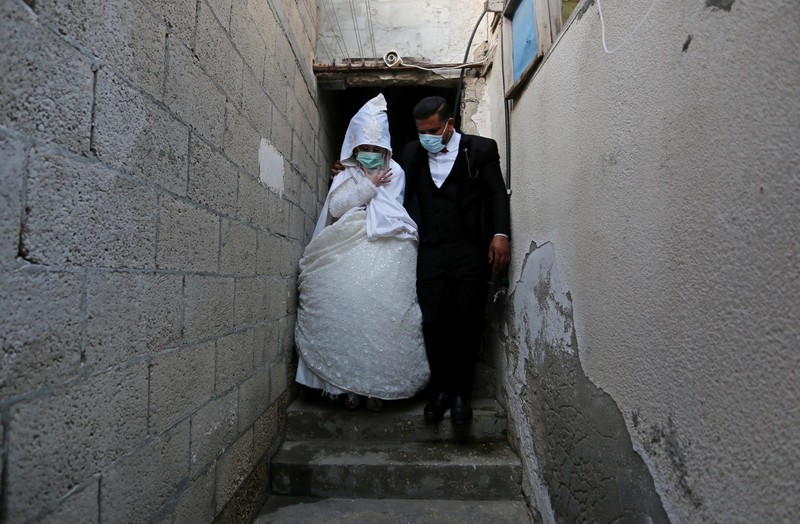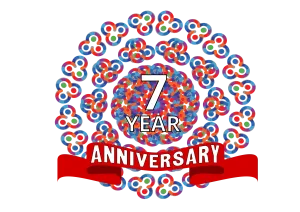
The constantly updated world map and dashboard published by Johns Hopkins University’s Center for Systems Science and Engineering has become a vital resource for everyone to track the COVID-19 pandemic.
However, health and human rights experts are faulting it for erasing Palestinians.
Johns Hopkins appears to have heard that criticism and reversed a decision to merge data about COVID-19 cases among Palestinians in the West Bank and Gaza Strip with cases from Israel.
But the experts say that does not go far enough.
🗺️ Have questions about the Johns Hopkins #COVID19 dashboard?
Check out this FAQ: https://t.co/hd5szbiQrQ— Johns Hopkins University (@JohnsHopkins) March 14, 2020
In a letter published by the medical journal The Lancet this week, Dr. Rita Giacaman and Rania Muhareb noted that the Johns Hopkins dashboard was “initially listing data recorded by the Palestinian health ministry in the West Bank and the Gaza Strip under its entry for Palestine.”
Data for Israel was listed separately.
However, on 10 March, Johns Hopkins “replaced the entry for Palestine with oPt” – which stands for “occupied Palestinian territories.”
Giacaman and Muhareb observed that the next day, “the oPt entry was removed and its figures merged with the entry for Israel.”
As a result, “Palestinians were unable to use the dashboard to track the spread of COVID-19 in the occupied Palestinian territory,” Muhareb told The Electronic Intifada on Friday.
“With cases rapidly increasing, it was also no longer possible to know whether the cases listed under Israel included those recorded in the occupied Palestinian territory, or whether Palestinians had been faded out with time.”
Giacaman teaches at the Institute of Community and Public Health at Birzeit University and Muhareb is a legal advocate at the Palestinian human rights group Al-Haq.
Inadequate response
Given Johns Hopkins’ historic ties to the slave trade, and its recent acknowledgment that it is built on land traditionally owned by the Piscataway people, Giacaman and Muhareb urged the university not to further “contribute to the erasure of Indigenous peoples across the globe.”
They contacted the Center for Systems Science and Engineering twice since 15 March, but had heard no reply by 25 March.
However, as of 26 March there is now a separate entry for “West Bank and Gaza” on the Johns Hopkins dashboard. As of this writing it shows 91 confirmed COVID-19 cases.
Israel, listed separately, has more than 3,000 cases.
While that at least separates out the data, Muhareb told The Electronic Intifada that the “West Bank and Gaza” entry “remains inconsistent with international law since it follows the United States State Department’s designations, which have repeatedly violated the prohibition on the acquisition of territory by force, undermined Palestinians’ rights and disregarded Israel’s prolonged military occupation.”
Muhareb said that she and Giacaman have again written to Johns Hopkins to say that the new “West Bank and Gaza” entry “fails to adequately address the situation while it further entrenches the erasure of Palestine and Palestinians from the world map.”
Johns Hopkins’ “first instinct in listing Palestine or the occupied Palestinian territory was the right one and we urged that the ‘West Bank and Gaza’ entry be amended accordingly,” Muhareb added.
“Biomedical injustice”
Palestinians endure entirely different conditions from Israelis in the face of the pandemic.
Indeed, Palestinians must face two enemies: the new coronavirus and Israeli military occupation which hampers their ability to protect themselves and exposes them to further danger.
Gaza is at particularly grave risk, facing what the Israeli human rights group B’Tselem calls a “nightmare scenario” if the virus spreads there more widely.
As of Friday, nine cases had been confirmed in Gaza. All were people in quarantine and there have been no reports of community spread.
B’Tselem has emphasized that Israel’s nearly 13 years of blockade and the resulting collapse of the economy, health and sanitation infrastructure have plunged Gaza into “the throes of a humanitarian disaster – created entirely by Israel.”
This point is underscored in another letter published by The Lancet this week, which urges that “the international community must act now to end structural violence” that Palestinians face.
It is signed by Muhareb, Dr. David Mills, a pediatric emergency doctor at the Boston Children’s Hospital who partners with the Palestine Children’s Relief Fund, Dr. Bram Wispelwey, a physician at Boston’s Brigham and Women’s Hospital who works with Palestinians to strengthen their healthcare systems, and Dr. Mads Gilbert, an emergency surgeon who treated the wounded during Israel’s 2014 assault on Gaza.
“A COVID-19 pandemic that further cripples the Gaza Strip’s health care system should not be viewed as an inevitable biomedical phenomenon experienced equally by the world’s population,” they write, “but as a preventable biosocial injustice rooted in decades of Israeli oppression and international complicity in the struggle for the health, fundamental rights, and self-determination of all Palestinians.”
Featured image: A Palestinian bride and groom wearing masks celebrate their wedding at home in Khan Younis on 26 March, after authorities in the Gaza Strip closed wedding halls as a preventive measure against the COVID-19 pandemic. Ashraf AmraAPA images
Source URL: Electronic Intifada
- orinocotribunehttps://orinocotribune.com/author/orinocotribune/November 24, 2025
- orinocotribunehttps://orinocotribune.com/author/orinocotribune/
- orinocotribunehttps://orinocotribune.com/author/orinocotribune/
- orinocotribunehttps://orinocotribune.com/author/orinocotribune/






